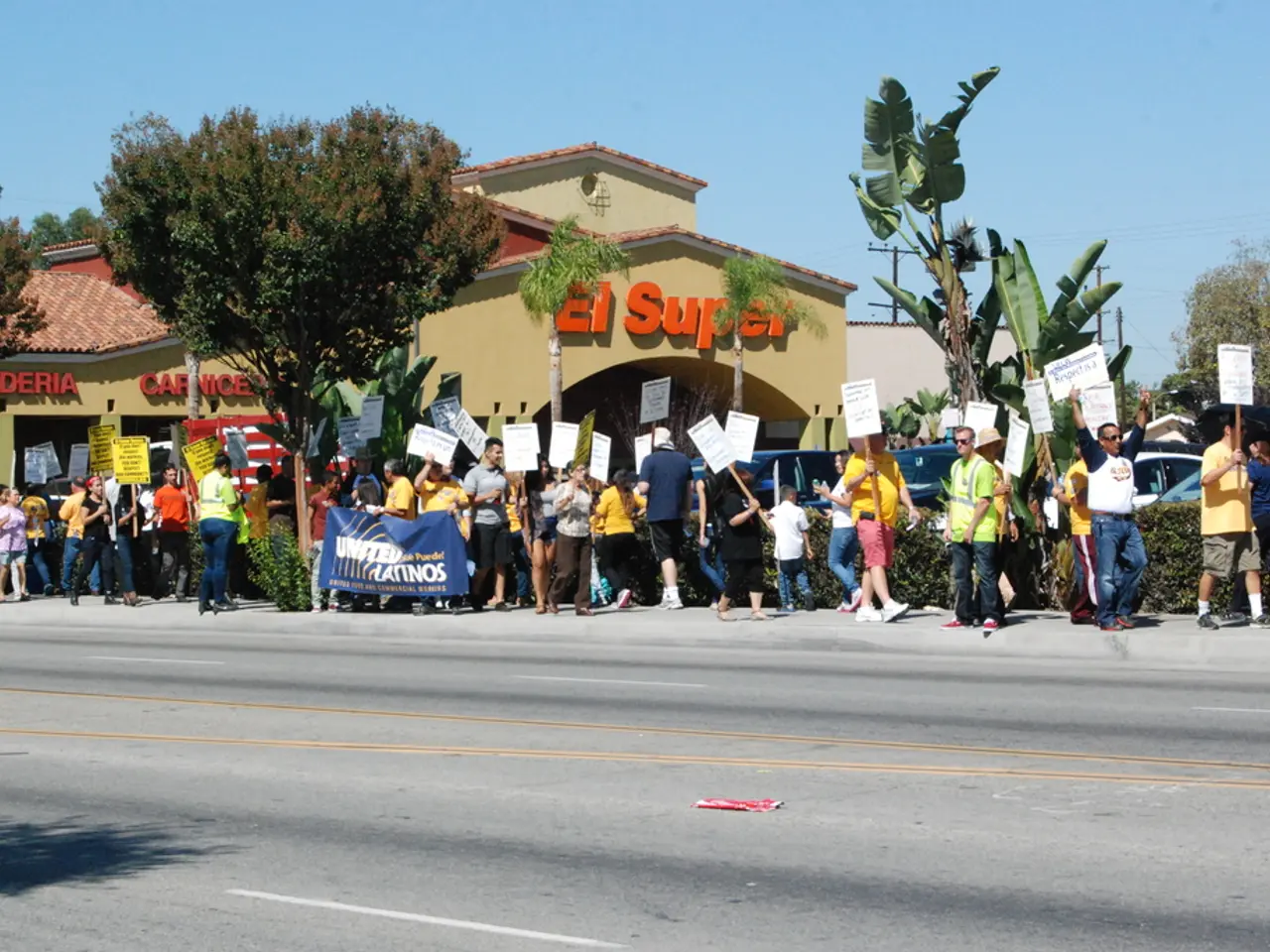Examining the Accuracy of Polls in Politics
In the world of politics, the role of political polls in shaping public sentiment and predicting election outcomes cannot be overstated. James Pithering, a mathematician with a passion for numbers, delves into the intricacies of this fascinating field.
Political polls serve as a barometer of public opinion, providing insights into the preferences of citizens regarding specific candidates, issues, or policies. To maintain their integrity, samples used in these polls must be representative of the larger population. However, as history has shown, polling inaccuracies can occur, as seen in the 2016 Brexit referendum and the 1948 U.S. Presidential election.
The accuracy of political polls hinges on several factors. The primary principle behind political polling is the use of statistical sampling, ensuring that the sample mirrors the population's demographic and political characteristics. A poll with too small a sample or one that is not representative of the population will have large margins of error, reducing its accuracy.
Every poll has a margin of error, reflecting the uncertainty due to sampling variation. Interpreting trends or changes between polls is particularly challenging because errors from two separate estimates accumulate, making it harder to confidently assert real shifts unless changes exceed the margin of error.
Pollsters weight samples to adjust for demographic or political variables such as party identification, age, gender, or geographic distribution. However, these weights rely on accurate demographic models. If pollsters assume, for example, that party identification remains stable since the last election, they might underestimate shifts in voter preferences, leading to inaccuracies in predictions.
Low response rates can introduce systematic bias if the opinions of non-respondents differ from respondents. High response rates and careful consideration of who participates are crucial for trustworthy results. Different survey modes (phone, in-person, online) have distinct biases based on who is reachable or willing to respond, affecting representativeness.
Because of these scientific constraints, poll results should be interpreted as estimates with uncertainty rather than precise forecasts. Poll averages, aggregating multiple polls, can improve reliability by smoothing out individual poll errors, assuming polling methodologies are consistent. Additionally, polls conducted close to election day have historically been more accurate, as voter opinions are more settled, and sampling frames better reflect actual voters.
Understanding the nuances of political polls is essential for any informed citizen. Recognizing these scientific underpinnings helps avoid overconfidence in any single poll and promotes a nuanced understanding of what poll results signify about public opinion in the political arena. The media's reporting on political polls shapes public opinion and can influence the interpretation and influence of polling data on citizens.
In conclusion, the scientific rigor in sampling design, sample size, weighting, response rate management, and error estimation directly impacts how accurate political polls are and how their results should be interpreted. By understanding these factors, we can make more informed decisions and contribute to a more informed citizenry.
[1] Gelman, A., & King, L. (2014). Statistical Inference and Data Analysis for Political Science. Cambridge University Press. [2] Groves, R. M., & Lyberg, S. (2013). The Future of Survey Sampling. John Wiley & Sons. [3] Katz, R. N., & Lazarsfeld, P. F. (1955). Personal Influence: The Part Played by People in Social Change. Free Press. [4] Niemi, R. G., & Weisberg, S. L. (2014). The Changing American Voter: How and Why Americans Vote in Elections and Why They Stay Home. CQ Press. [5] Pew Research Center. (2018). The Evolution of Political Polling. Retrieved from https://www.pewresearch.org/fact-tank/2018/06/07/the-evolution-of-political-polling/
- Political polls provide insights into the public's opinion about candidates, issues, or policies, serving as a crucial barometer for the political landscape.
- To maintain poll integrity, samples used must be representative of the larger population's demographic and political characteristics.
- James Pithers, a mathematician, dives into the intricacies of political polling, focusing on the scientific principles behind their accuracy.
- Advances in research, demographics, and health-and-wellness, including mental health, have contributed to enhanced understanding of the voting public.
- Polling errors, despite rigorous scientific design, can occur, with historical examples in the 2016 Brexit referendum and the 1948 U.S. Presidential election.
- The devil is in the details when it comes to political polling; statistical sampling, weighting, response rate management, and error estimation all play key roles.
- Careful consideration of sampling variation reveals every poll has a margin of error, making it essential to interpret trends or changes between polls critically.
- Pollsters should be wary of outdated assumptions and consider shifts in voter preferences when designing polling questions and weighting samples for greater accuracy.
- Low response rates and biases from survey modes can result in systematic errors, adversely impacting poll results' reliability.
- The media plays an integral part in shaping public opinion by reporting on political polls, which, in turn, influence citizens' interpretations of polling data.
- Understanding the scientific nuances of political polling fosters informed decision-making and helps build a more informed citizenry. Essential texts on this topic include "Statistical Inference and Data Analysis for Political Science" by Gelman and King, "The Future of Survey Sampling" by Groves and Lyberg, and "Personal Influence" by Katz and Lazarsfeld.




